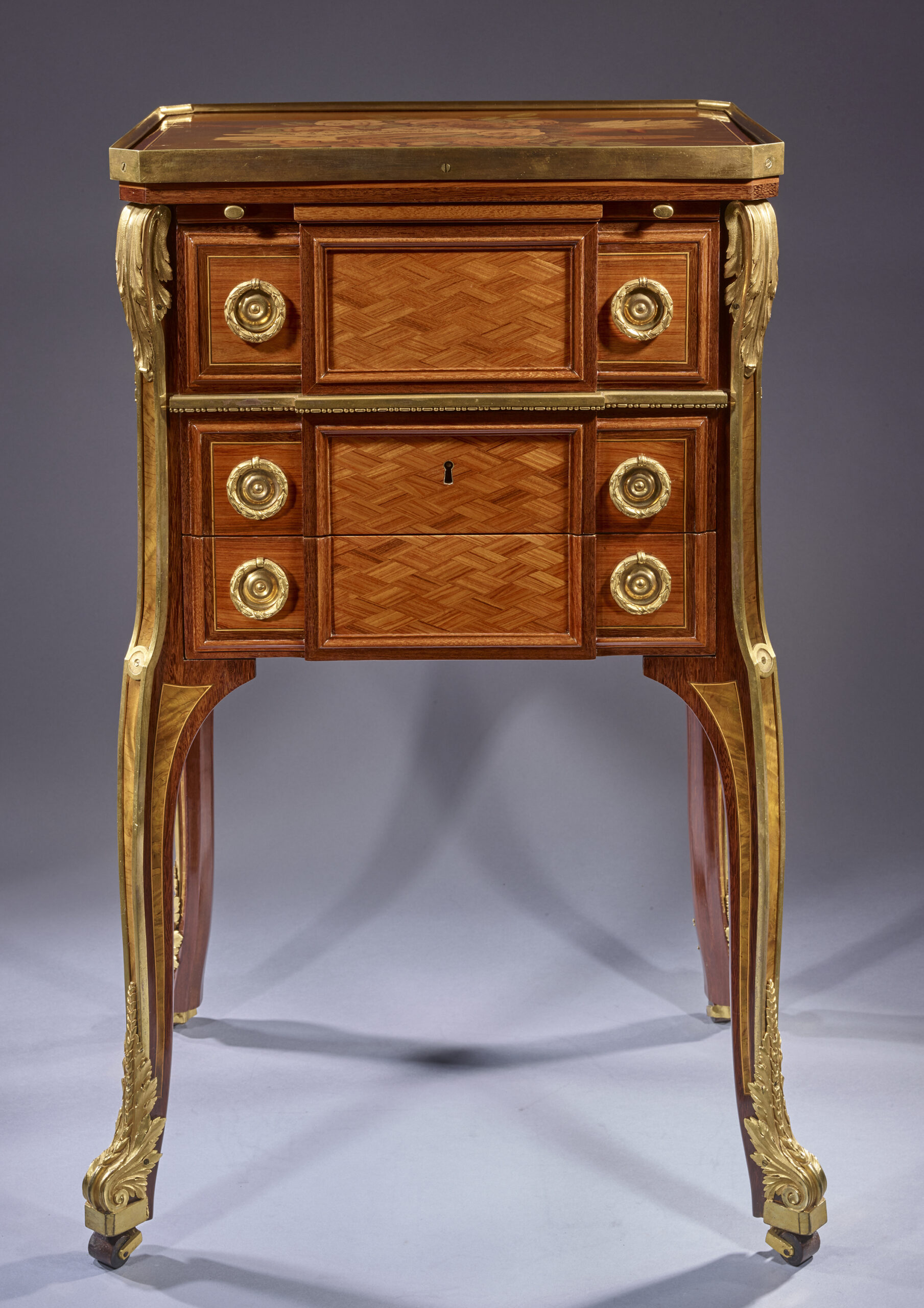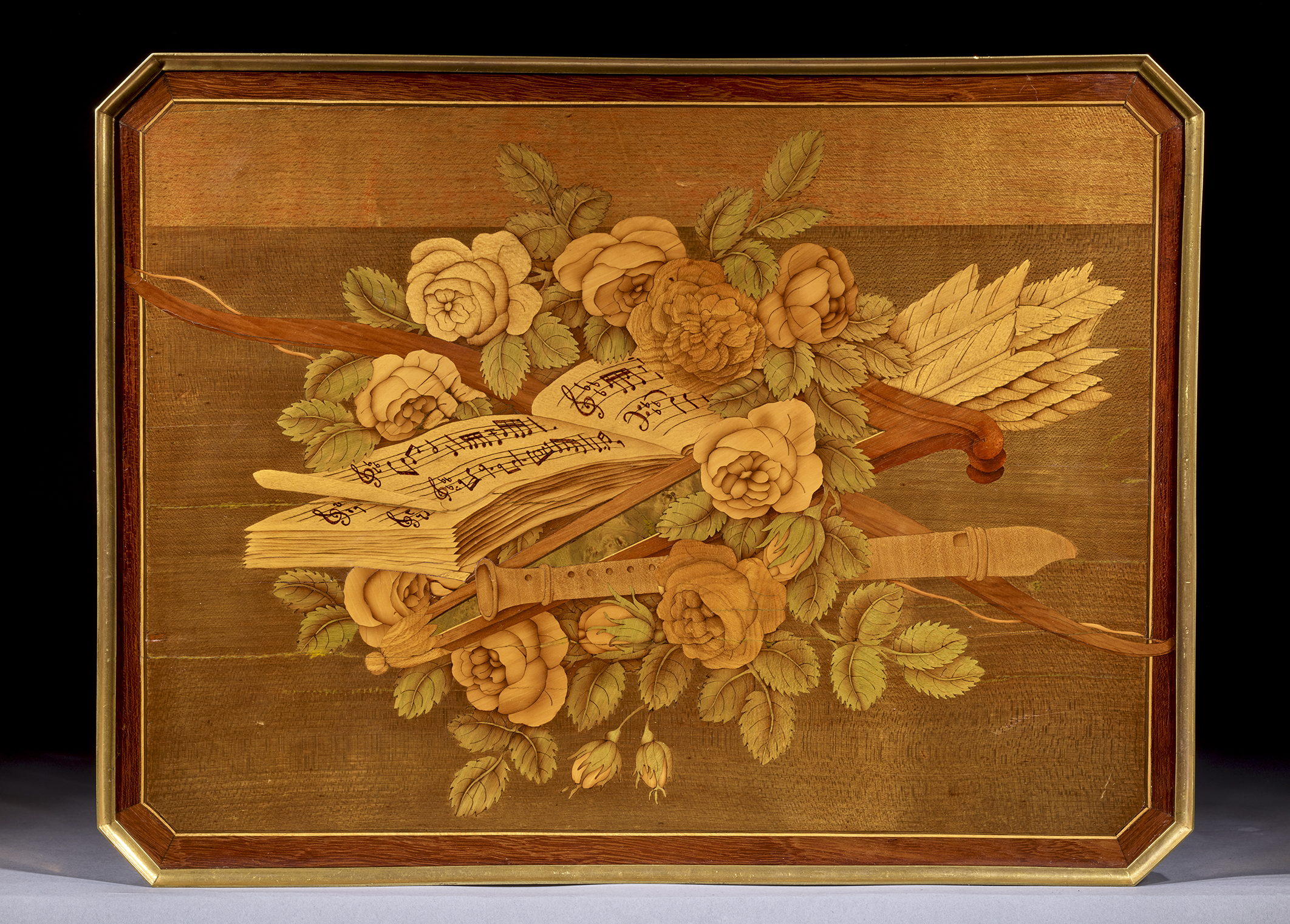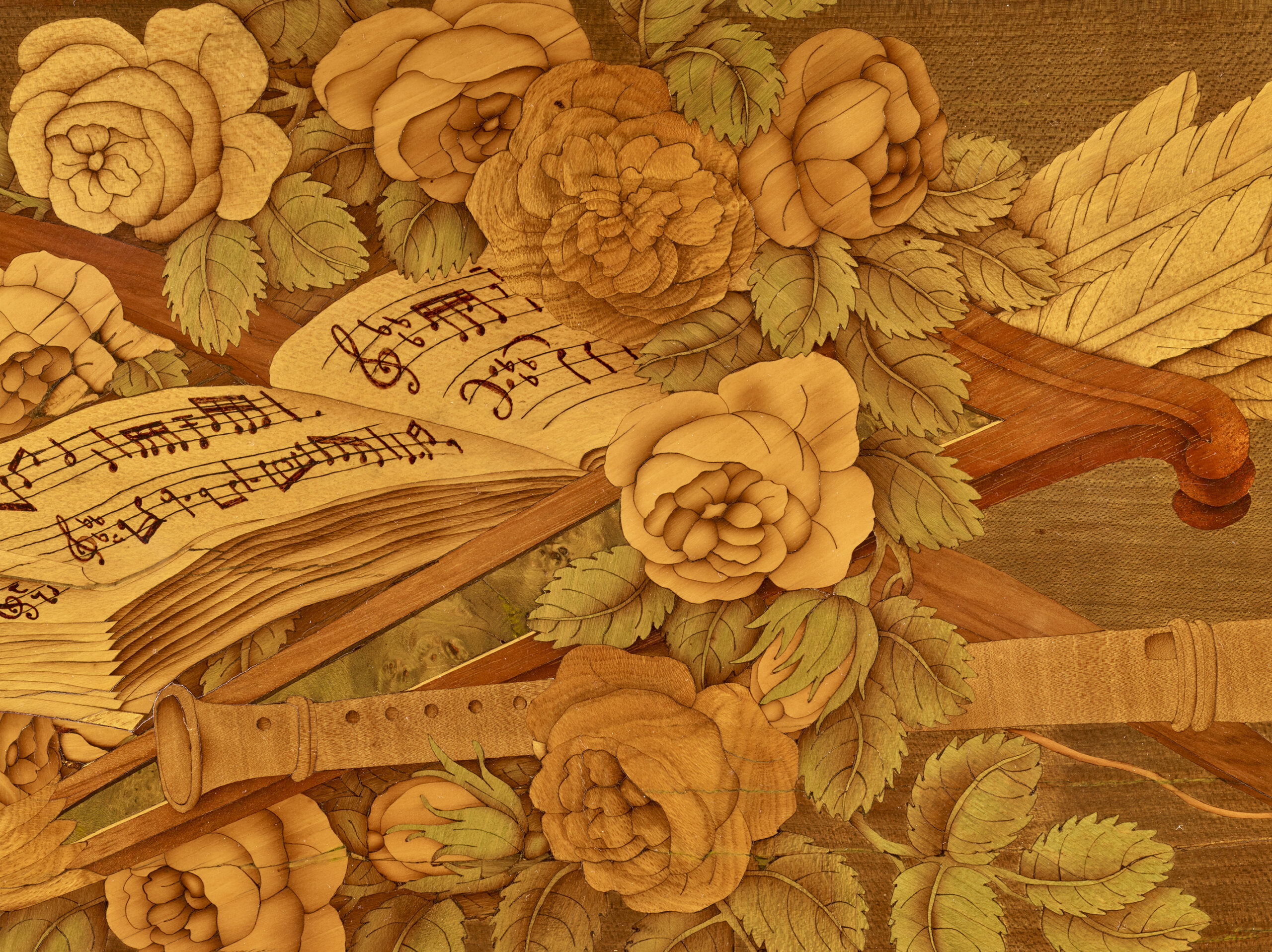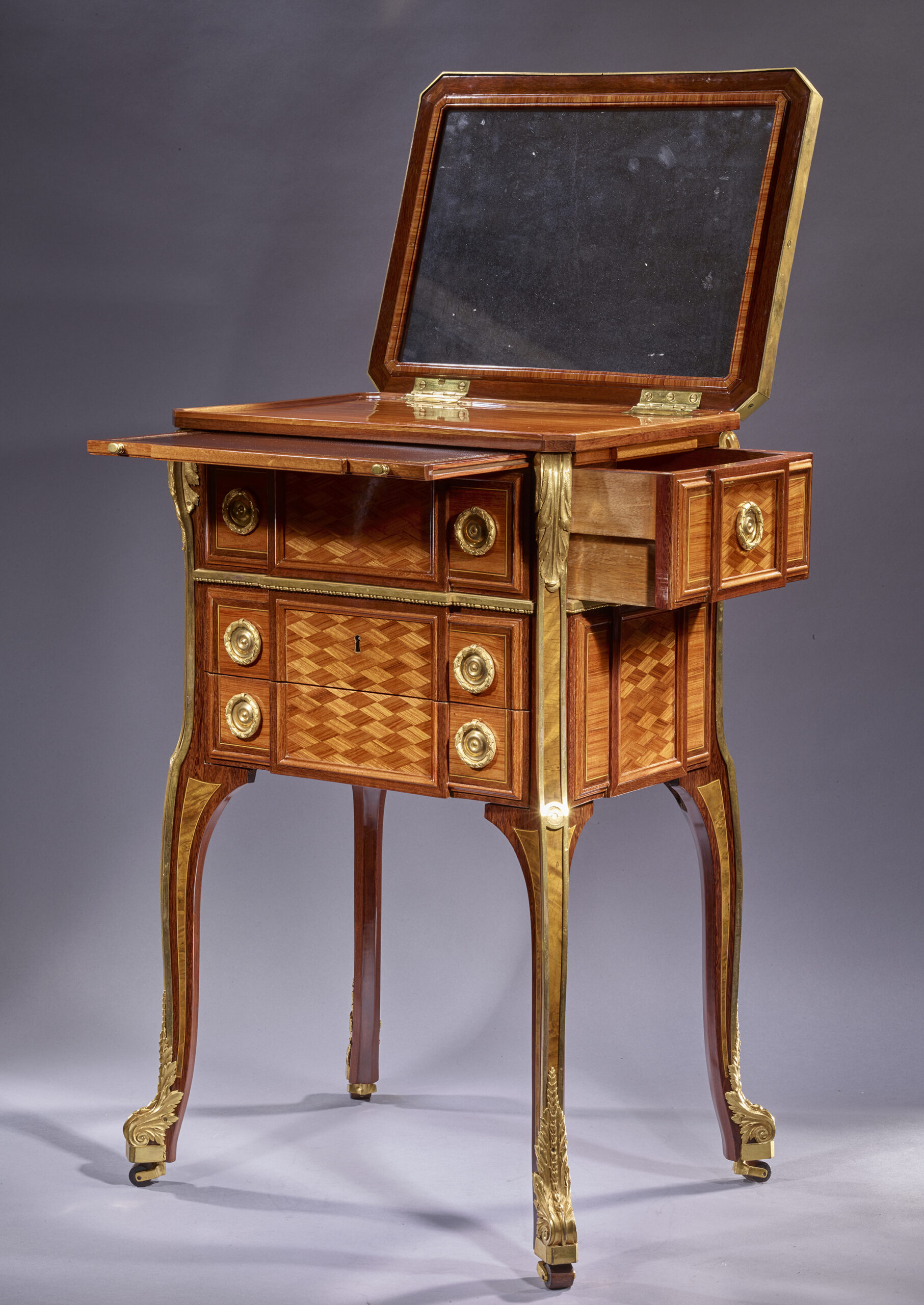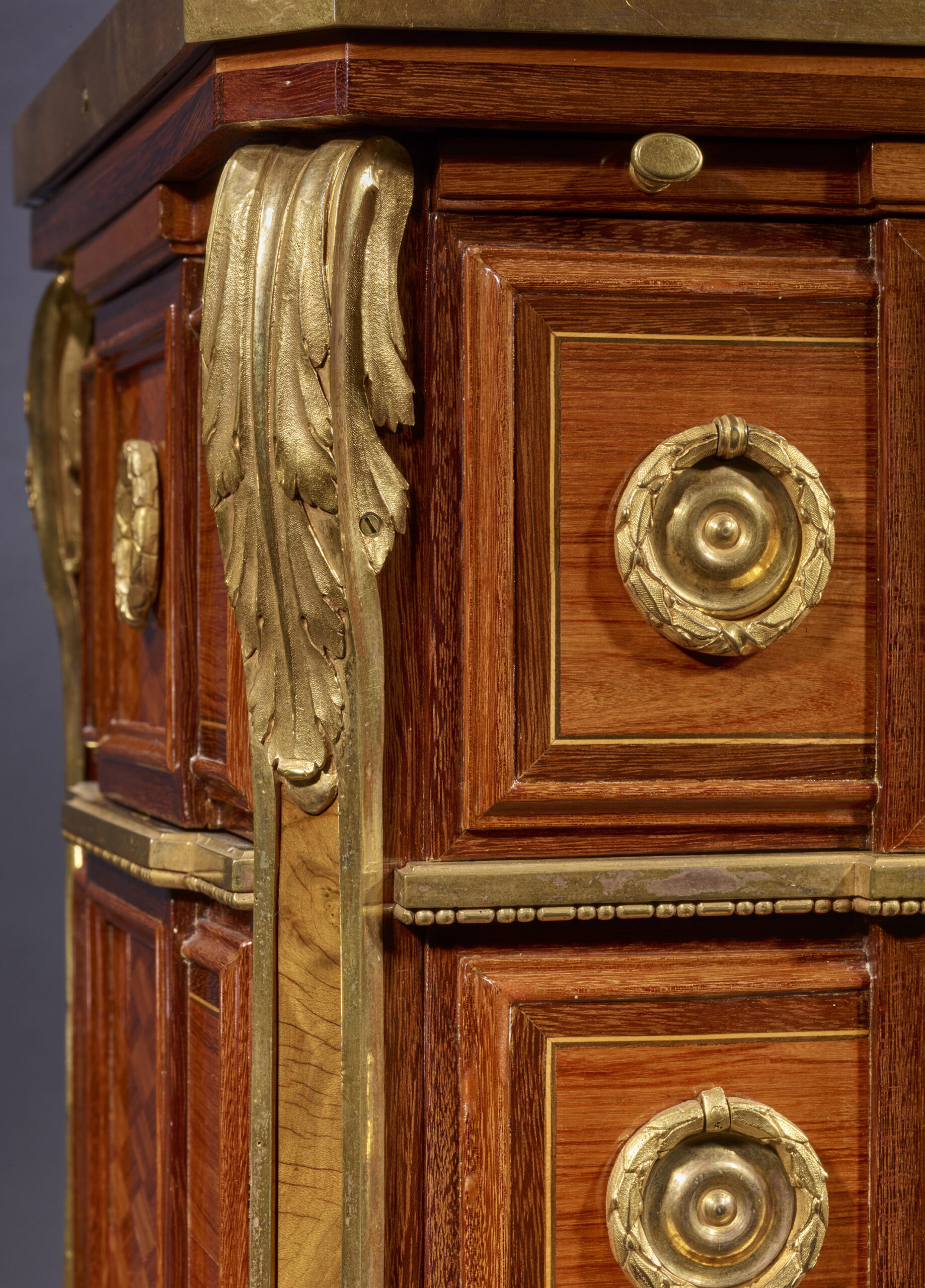

Hungarian oak frame; rosewood veneer; amaranth; maple burl: marquetry in light and stained woods on a sycamore ground; polychrome wood marquetry; gilt bronze; leather; mirror.
Stamped three times: J.H. RIESENER.
H. 77.5 cm. (30 ½ in.); W. 51 cm. (20 in.); D. 40 cm. (15 ¾ in.).
PROVENANCE: collection of Count Patrice de Voguë (1928-2020) at the Château de Vaux-le-Vicomte, near Maincy (Seine-et-Marne); Christie’s sale in Monaco, on 17 June 2000, lot n° 363 (sold for 4.877.500 francs).
LITERATURE: David Linley, Charles Cator, and Helen Chislett, Meubles d’exception, Paris, 2010, p. 152, repr.
COMPARATIVE LITERATURE: 18e aux sources du design, catalogue of the exhibition held at the Château de Versailles from 28 October 2014 until 22 February 2015, Dijon, 2014, p. 242-243, cat n° 75 (entry by Marc-André Paulin).
Dated circa 1775, this “chiffonnière” or work table, from the collection of Count Patrice de Voguë (1928-2020) at the Château de Vaux-le-Vicomte near Maincy (Seine-et-Marne), is the only recorded example of this model bearing Jean-Henri Riesener’s stamp (1734-1806, master in 1768, supplier to the Garde-Meuble de la Couronne from 1774 until 1785) three times. Another table of the same model is known, however without a stamp, which belonged successively to the collections of Bernard Steinitz, and then Nicolas Cattelain, and was exhibited at the Château de Versailles in 2014-2015, as lot n° 75 in the exhibition 18e aux sources du design. To these two tables may be added a later example – dated circa 1780-1784 – entirely veneered in mahogany, from the collection of Richard Seymour-Conway (1800-1870), 4th Marquis of Hertford, today part of the Wallace Collection, in London.
Born in 1734 in Gladbeck Westphalia (Germany), Riesener was the son of a chairmaker. The exact year of his arrival in Paris is unknown, but it was possibly around 1754. He apprenticed with Jean-François Oeben, who was established at the Arsenal, and quickly became one of his leading artisans. Upon Oeben’s death in January 1763, Riesener took over management of the workshop on behalf of his widow, continuing until he attained master status, officially registered in 1768. For five years, furniture pieces stamped J.F. OEBEN were in fact made – or at least finished, when the frameworks already existed – under Riesener’s direction.
In 1767, he married Oeben’s widow and took over his residence and the workshop at the Arsenal – a privileged enclosure sheltered from the restrictive regulations of the carpenters’ and cabinetmakers’ guilds. There, he worked for more than thirty years, until 1798. From that moment, Riesener experienced a rapid rise to prominence. On February 5, 1771, he made his first delivery to the Garde-Meuble de la Couronne, presenting a mechanical desk, which had become his specialty. In June 1774, Gilles Joubert, at the time eighty-five years old, ceded him by contract his title of Ébéniste du Roi.
The ten following years marked the peak of Riesener’s career: between 1774 and 1784, he delivered furniture totaling 938.000 livres to the Garde-Meuble de la Couronne!!!
The arrival in 1784 of Thierry de Ville d’Avray as head of the Garde-Meuble de la Couronne marked the beginning of the cabinetmaker’s decline. A few years later, the Revolution – and the disappearance of the luxury clientele – brought about his ruin. Riesener died under the Empire, in 1806.
Riesener was one of the few cabinetmakers to have been portrayed during the Enlightenment period. His portrait by Antoine Vestier circa 1785, is today part of the Château de Versailles collection. He is depicted holding a pencil, thus clearly expressing his strong desire to elevate himself to the status of a furniture designer-artist, rather than a mere craftsman.
Ill. 1 – Jean-Henri Riesener (1734-1806), Similar table, not stamped, Paris, circa 1775. Former collections of Bernard Steinitz, then of Nicolas Cattelain. Published in the exhibition catalogue of 18e aux sources du design, held at the Château de Versailles from 28 October 2014 until 22 February 2015, Dijon, 2014, p. 242-243, cat n° 75 (entry by Marc-André Paulin).
Ill. 2 – View of the top of the table exhibited at the Château de Versailles in 2014-2015.
